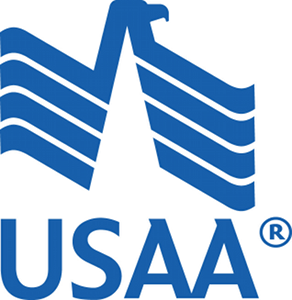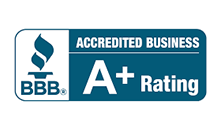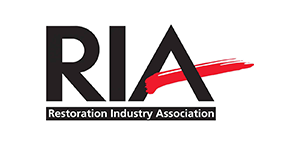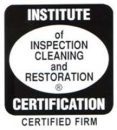Did you know water damage is a common insurance claim in the U.S.? The Insurance Information Institute says 29% of homeowner claims are for water damage. Knowing how to fix water damage is key to avoid mold and structural issues.
When you face water damage, act fast. First, turn off the electricity to keep everyone safe. Then, find where the water is coming from, stop it, and see how bad the damage is. You might need to call professionals for serious water damage repair.
It’s important to document the damage for insurance. Many policies cover damage from plumbing or bad weather. Knowing how to handle floods and control moisture can help reduce damage and stop mold, making your home safer.
Key Takeaways
- Around 29% of homeowner insurance claims in the U.S. relate to water damage.
- Turn off electricity first for safety when dealing with water damage.
- Identify and stop the source of water intrusion promptly.
- Document damage for insurance claims; policies often cover such incidents.
- Immediate action and thorough cleanup can prevent mold growth and further damage.
Understanding Types and Categories of Water Damage
Water damage is divided into three main categories, each with different levels of contamination and health risks. It’s crucial to assess water damage correctly to keep people safe and figure out the best way to fix it.
Category 1 water damage, also called clean water, comes from things like broken pipes or tanks. It’s the safest kind of water damage and doesn’t usually pose health risks to people.
Category 2 water damage, or gray water, might make people sick. It comes from appliances like washing machines or toilets that overflowed but didn’t spill feces. It’s not super dangerous right away, but it needs quick action to keep risks low.
Category 3 water damage, or black water, is the most dangerous. It has things like sewage, toxins, or harmful germs. Fixing black water damage quickly is key to avoiding health problems.
Knowing what kind of water damage you have helps in deciding how to clean it up and fix it. This knowledge helps homeowners and experts get ready for different water damage situations.
Steps to Initially Address Water Damage
Acting fast when you have water damage is key to avoiding bigger issues. Starting with initial water damage control steps can stop more problems. Here are key emergency water damage steps to take:
- Find and stop the water source. This could mean turning off the main water or fixing a leak.
- If it’s safe, turn off power in the affected areas to prevent electrical dangers.
- Call your insurance company right away to report the damage and talk about what to do next.
- Use pumps, vacuums, or towels to remove standing water quickly. Quick action is vital in preventing water damage spread.
- Remove wet items like furniture, carpets, and personal stuff to stop mold from growing.
- Start drying out the area by opening windows and using fans and dehumidifiers to lower moisture.
- Document the damage for insurance claims. Take photos and list the items affected.
- If the flood is big, think about getting help from water damage experts. They can make sure everything is dried out and fixed right.
Following these emergency water damage steps can greatly lower the chance of more issues and save on repair costs. Quick action is crucial for effective initial water damage control and stopping water damage spread.
Mitigation and Cleanup Process
The first step in fixing water damage is a detailed check to see how bad the damage is. This check looks at the damage and checks if the building is safe. It’s key to making a plan to fix the water damage well.
First, experts remove things like furniture and personal items. This makes it easier to get to the damaged spots. Then, they use special tools like high-powered pumps and wet vacuums to remove the water.
Items touched by water can be harmful to health, so they must be thrown away safely. Next, they use methods to keep more damage from happening. This includes using fans and dehumidifiers to lower moisture and stop mold.
The final step is fixing and cleaning the damaged areas. This includes cleaning, getting rid of bad smells, and making things sanitary. Sometimes, items that can’t be fixed are replaced for safety. Experts use special methods to dry everything out and stop mold from coming back.
The cost to fix flood damage can change a lot, based on the damage type. Category 3 damage, known as black water damage, usually costs more because it needs a lot of cleaning. Using good methods for fixing water damage is key to making a home safe again and avoiding future problems.
The Restoration and Repair Procedures
Water damage restoration is key to making a home like new again. After cleaning up and mitigating the damage, repairs are done to fix the structure and look of the home. These repairs can include painting, replacing drywall, and even structural work like new flooring.
First, it’s important to make sure the affected areas are completely dry. Tools like moisture meters help with this. It’s also crucial to tackle mold or mildew early to prevent further damage. Even after visible water is gone, testing for moisture is a must to avoid future problems.
Deciding what to keep and what to throw away is a big part of restoration. Items like mattresses that are badly damaged usually need to go. But, things like hardwood furniture can be saved and fixed. This is also a chance to upgrade to better materials, like waterproof flooring, for long-term benefits.
- Mold remediation to eliminate any growth caused by moisture.
- Replacement of damaged structures, including drywall and flooring.
- Upgrading materials to enhance durability, such as waterproof options.
- Use of moisture meters to ensure complete dryness.
With careful and thorough work, homeowners can be sure their homes will be safe and comfortable again. Restoration means their homes are ready for future use and protected against future water damage.
Tips for Preventing Future Water Damage
Keeping your home safe from water damage is key to protecting your property. Homeowners can use several strategies to lower flood risk and keep their homes safe.
- Maintain indoor humidity levels below 60% to reduce the likelihood of mold growth and water damage.
- Routinely inspect appliances and plumbing fixtures for any signs of wear and tear or leaks.
- Implement waterproofing measures, such as sealing basements and other vulnerable areas of the home.
- Regularly clean and maintain roofs and gutters to ensure they effectively divert water away from the house.
- Install backflow valves or sump pumps, particularly in flood-prone regions, to mitigate water infiltration during heavy rains.
Talking to water damage restoration experts can give you great advice on how to prevent water damage in your home. It’s also important to follow water damage insurance tips. Homeowners should check and maybe change their insurance to cover water-related issues.
Conclusion
Water damage in a home can be stressful and costly. Understanding the types and categories of water damage helps homeowners act fast. This quick action is key to preventing more damage and starting the recovery process.
This article has shown how important it is to act quickly and effectively. Every step, from the first response to cleaning and fixing things, is crucial. Getting help from professional water damage services can make a big difference. They bring the needed expertise and support to fix things and make your home safe again.
Stopping water damage before it happens is an ongoing task. By following the prevention tips, homeowners can protect their property and health. Keeping up with maintenance, knowing where water problems can come from, and fixing issues fast are important steps. Being ready and taking action quickly is key to keeping your home safe and sound.


















